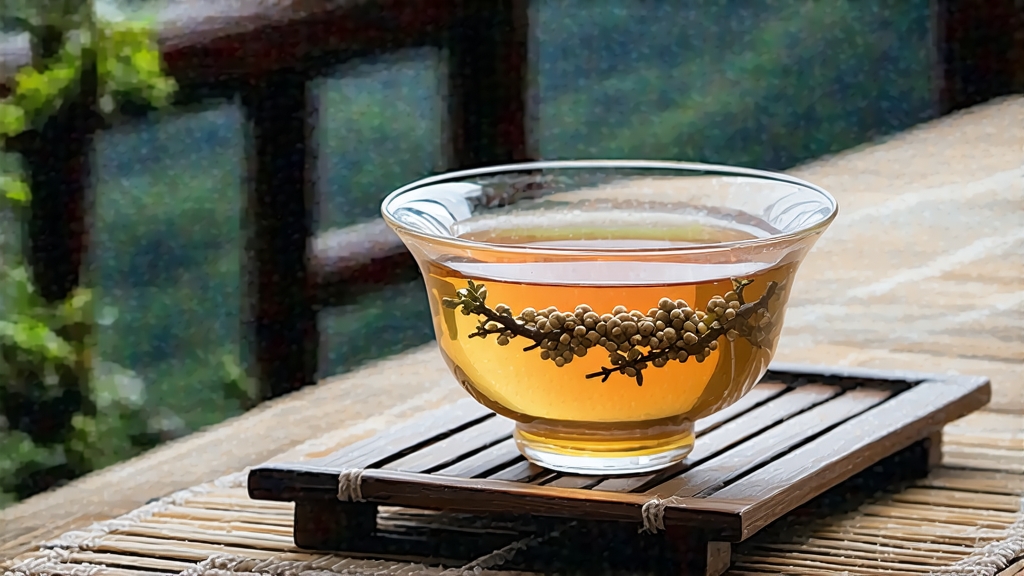
Among the six great families of Chinese tea, white tea is the least theatrical yet the most haunting: it is simply picked and dried, allowing leaf and time to finish the story. Within this minimalist lineage, Bai Hao Yin Zhen—literally “White-Hair Silver Needle”—stands as the purest expression of the art. Each slender bud, sheathed in silvery down, looks like a sliver of captured moonlight and tastes like the first breath of spring. To international drinkers who meet it in specialty cafés from Melbourne to Montreal, Silver Needle often becomes the gateway that re-defines what “tea” can be.
Historical whispers
The written record first mentions “white tea” during the Song dynasty (960-1279), when Huizong Emperor—an aesthete who painted and composed in tea gardens—praised a down-covered tip so delicate that it had to be whisked, not steeped. The modern Silver Needle, however, took recognizable shape in the 1790s around Taimu Mountain in Fuding county, Fujian province. Coastal merchants, already exporting dark oolongs to Europe, found that lightly withered buds travelled better than fragile green teas; the silvery fuzz naturally buffered oxidation and breakage. By the late Qing, Fuding Silver Needle was gifted to the imperial court in Beijing, sealed in lacquered tins whose paper labels bore the county seal—an early form of provenance branding. When leaf export collapsed during the 1939–45 war, villagers buried unopened chests in cool caves; rediscovered in 1946, the buds had mellowed into honeyed relics, convincing locals that white tea could “live” and improve for decades, a revelation that pre-dated the West’s discovery of aged pu-erh by half a century.
Terroir and two true cultivars
Authentic Silver Needle is produced only from two specific cultivars: Fuding Da Bai (Big White) and Zhenghe Da Bai. The former yields plumper buds with a mango-like sweetness; the latter, grown at slightly higher elevation, offers a cooler, jasmine-laced finish. Both cultivars sprout earlier than neighbouring tea varieties, usually between mid-March and early April, when night temperatures still dip to 8 °C. The cold stress slows cell respiration, concentrating amino acids—especially L-theanine—so the finished tea gains a brothy umami softness rarely found in other white categories such as White Peony (Bai Mu Dan) or Gong Mei.
Hand that does almost nothing
The craft looks deceptively simple: pick, wither, dry. Yet each step is clocked to relative humidity, solar angle, and bud moisture. At dawn, pickers select only the unopened needle—no leaf, no “fish-tail” sepals—using a diagonal snap that keeps the stem base intact. Within two hours the buds are spread on bamboo trays stacked inside a sun-warmed corridor called a “withering gallery.” Here they rest for 36–48 hours, losing about 70 % moisture while enzymes gently oxidise the outer cell walls. Masters shuffle the trays every twenty minutes so every side receives the same kiss of mountain breeze. When the bud feels leather-tough and releases a faint cucumber note, it is moved to a low-temperature charcoal oven (50 °C) for final desiccation. The entire cycle never exceeds 55 °C, preserving the oxidative enzymes that will allow the tea to evolve for decades. A finished kilo requires roughly 30,000 buds—one afternoon’s work for twenty pickers.
Chemistry in the cup
Because the bud is the plant’s nutrient vault, Silver Needle carries the highest catechin-to-theaflavin ratio of any white tea. What surprises newcomers is the absence of grassy astringency: the downy hairs are rich in bound terpenes that convert to hot-water-soluble linalool and geraniol, giving aromas of honeysuckle and ripe cantaloupe. Meanwhile, the low-temperature process keeps chlorophyll intact, so the liquor glows pale champagne rather than the greenish cast of green teas. Stored in breathable clay jars, the buds slowly oxidise; after five years the cup darkens to topaz and develops cocoa notes reminiscent of raw Dominican cacao.
How to brew: less is more
Silver Needle is forgiving, but it rewards restraint. For western-style brewing, use 3 g per 250 ml